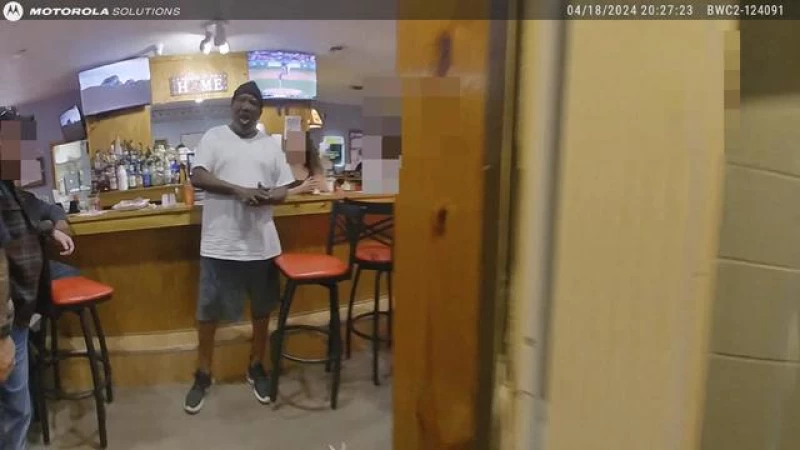Toledo, Ohio — An Ohio man who was handcuffed and left facedown on the floor of a social club last week died in police custody, and the officers involved have been placed on paid administrative leave.
The crash at about 8 p.m. on April 18 had severed a utility pole. Officer Beau Schoenegge's body-camera footage shows that after a passing motorist directed police to the bar, a woman opened the door and said: "Please get him out of here, now."
Police grabbed Tyson and he resisted being handcuffed and said repeatedly, "They're trying to kill me" and "Call the sheriff," as he was taken to the floor.
They restrained him - including with a knee on his back - and he immediately told officers he couldn't breathe. A recent Associated Press investigation found those words - "I can't breathe" - had been disregarded in other cases of deaths in police custody.
Police Encountered a Medical Crisis
During a recent incident, officers responded to a call and encountered Tyson, who was facedown on the floor with his legs crossed. Initially, the police believed Tyson was fine and urged him to calm down. However, it soon became apparent that Tyson was in a medical crisis as he mentioned he couldn't breathe.
Despite Tyson's distress, officers were seen joking with bystanders and going through his wallet before realizing the severity of the situation. Five minutes after Tyson's plea for help, one officer questioned if Tyson had calmed down, to which another responded that he might be unconscious.
This situation is reminiscent of the events leading to the tragic death of George Floyd in 2020. Tyson, who was Black according to the coroner's office, found himself in a similar predicament. The officers involved, Schoenegge and Camden Burch, were placed on leave by the Canton Police Department. It's worth noting that both officers are white.
Despite attempts to rouse Tyson, including asking him to stand and checking for vital signs, he remained unresponsive. Eventually, officers realized the severity of the situation and called for medical assistance.
Urgent Medical Response
As Tyson's condition deteriorated, officers on the scene recognized the urgency of the situation. One officer noted that medics needed to act quickly as Tyson was not showing any signs of improvement and they were uncertain about his pulse. Without hesitation, the officers initiated CPR in an attempt to stabilize Tyson's condition.
Chief investigator Harry Campbell, with the Stark County Coroner's Office, revealed on Thursday that an autopsy had been carried out earlier in the week and Tyson's remains had been handed over to a funeral home.
Jasmine Tyson, Tyson's niece, dismissed the video as "nonsense" during an interview with WEWS-TV in Cleveland. "It felt like an eternity before they finally checked on him," Jasmine Tyson remarked.
When contacted by phone on Thursday, a member of the Tyson family declined to comment immediately.
The Ohio Attorney General's Bureau of Criminal Investigation declared in a statement on Thursday that their investigation will not determine the justification of force, leaving the decision on whether charges related to the use of force are warranted to the prosecuting attorney or a grand jury.
Canton Mayor William V. Sherer II personally offered his condolences to Frank Tyson's family.
"As we navigate through this difficult period, my aim is to maintain transparency with the community," Sherer stated in a release on Wednesday.
Since the mid-1990s, the U.S. Department of Justice has been cautioning police officers to avoid keeping suspects on their stomachs once they are handcuffed due to the risk of positional asphyxia.
Experts in policing also acknowledge that prolonged chest pinning or excessive weight on a person can lead to breathing difficulties and stress on the heart, potentially causing them to stop breathing. However, when done correctly, placing someone on their stomach is not inherently life-threatening.
An investigation conducted by The Associated Press in March revealed that over a decade, more than 1,000 individuals died after being subdued by police using non-lethal methods, such as prone restraint.







